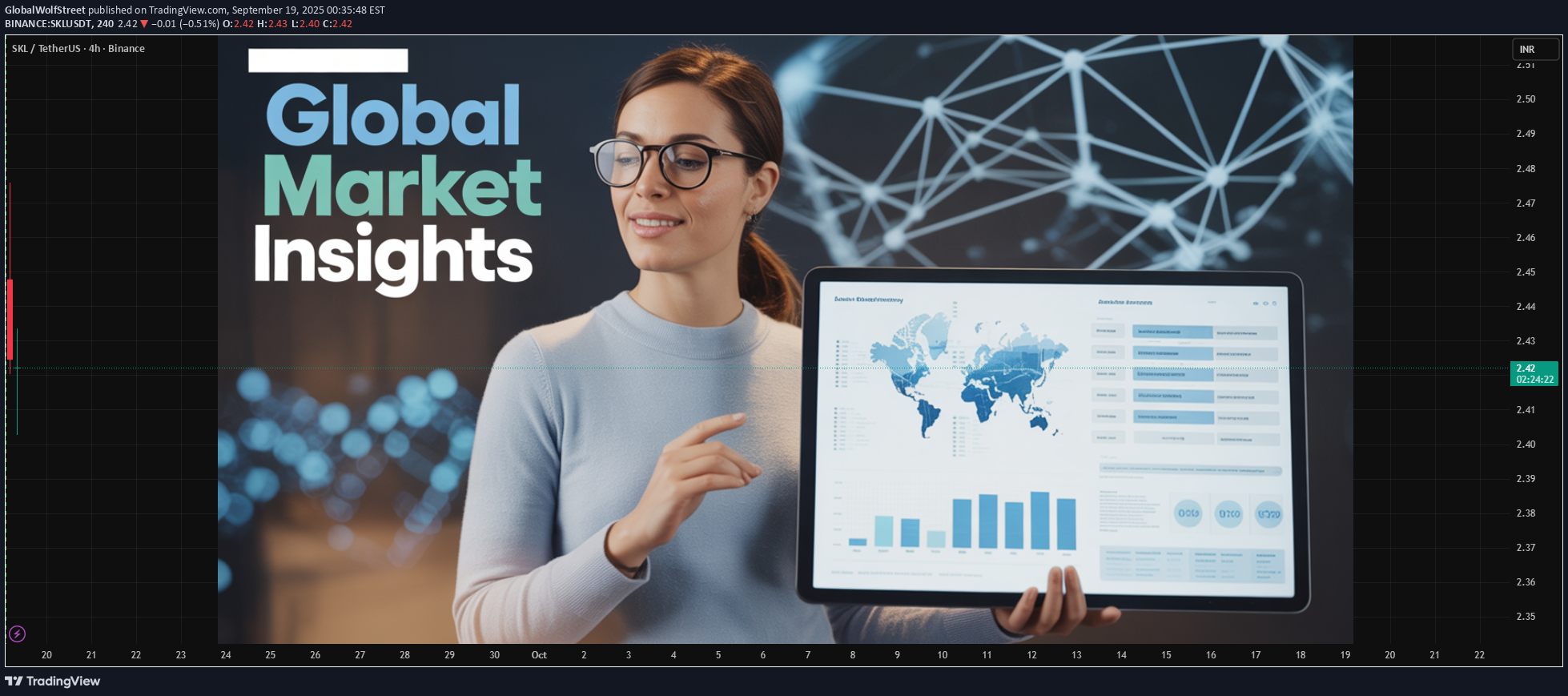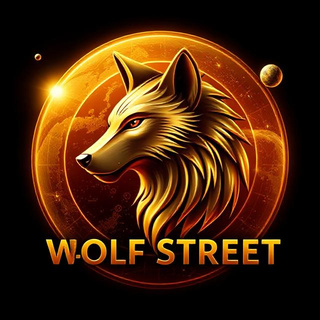19.09.2025 tarihinde sembol SKL hakkında Teknik GlobalWolfStreet analizi
Global Market Insights

Global Market Insights Introduction The world economy has never been as connected as it is today. A single headline in New York can influence stock prices in Mumbai, a factory shutdown in China can disrupt supply chains in Europe, and a currency decision in Tokyo can ripple across the global financial system. This interconnectedness is what we call the global market—a dynamic web of trade, finance, investment, and technology that links countries, businesses, and consumers. Understanding global market insights means going beyond numbers and charts. It is about recognizing patterns, decoding the interplay between economies, and anticipating the opportunities and risks that shape the world’s financial and trade environment. For businesses, it means better decision-making; for investors, it provides a roadmap; and for policymakers, it is the foundation of economic strategy. Historical Evolution of Global Markets Early Trade Routes Global markets are not new—they have been evolving for centuries. Ancient trade routes like the Silk Road connected China, India, and Europe, enabling the exchange of goods, culture, and ideas. Spices, silk, and gold moved across continents, laying the foundation of international trade. Colonial Trade During the colonial era, European powers expanded overseas trade. Colonies became sources of raw materials, while Europe turned into the hub of global commerce. The triangular trade routes connected Africa, the Americas, and Europe, setting the stage for structured global markets. Industrial Revolution The 18th and 19th centuries brought industrialization, mass production, and mechanization. This created demand for global raw materials and expanded markets for finished goods. Railways, shipping, and telegraph systems made trade faster and more reliable. Post-WWII Institutions After the devastation of World War II, new financial institutions like the IMF, World Bank, and GATT (later WTO) were established. Their goal was to stabilize currencies, promote trade, and rebuild economies. The Bretton Woods system anchored the US dollar as the world’s reserve currency. The Digital Era The late 20th and early 21st centuries saw globalization accelerate. The internet, digital platforms, and financial technologies made cross-border trading seamless. E-commerce, digital payments, and global capital flows now define how markets operate. Key Drivers of Global Markets Economic Growth & GDP Trends Growth in GDP reflects an economy’s strength. For example, India’s rapid GDP expansion makes it attractive for foreign investment, while slowdowns in Europe raise global concerns. Central Banks & Interest Rates Monetary policy is a powerful driver. A rate hike by the US Federal Reserve often strengthens the US dollar, affects emerging market currencies, and shifts capital flows worldwide. Geopolitics Conflicts, trade wars, and diplomatic relations heavily impact markets. For instance, the Russia-Ukraine war disrupted energy markets, while US-China tensions reshaped technology supply chains. Technology & Innovation Advancements like artificial intelligence, fintech, blockchain, and automation are creating new asset classes and transforming trade. Digital finance is reducing barriers for investors across borders. Global Supply Chains Modern economies depend on complex supply chains. A disruption in semiconductor production in Taiwan can stall automobile factories in Germany or the US, highlighting interdependence. Global Market Segments Equity Markets Stock exchanges like NYSE, Nasdaq, London Stock Exchange, and NSE India are central to global finance. The US remains dominant, but Asia is rising fast, with China’s Shanghai and Shenzhen exchanges gaining global importance. Bond Markets The global bond market is even larger than equities. Sovereign bonds, like US Treasuries, are considered safe havens, while corporate bonds fund business expansion worldwide. Currency (Forex) Markets The foreign exchange market is the largest in the world, with daily transactions exceeding $7 trillion. The US dollar remains the dominant reserve currency, but the Euro, Yen, and increasingly the Chinese Yuan are challenging its supremacy. Commodities Oil, gold, copper, and agricultural goods form the backbone of commodity markets. Oil prices influence inflation, while gold is a traditional safe haven during uncertainty. Industrial metals like copper are seen as indicators of global economic health. Alternative Assets Cryptocurrencies, private equity, hedge funds, and real estate investments are becoming major parts of global portfolios. Bitcoin, in particular, has sparked debates about the future of decentralized money. Regional Market Insights United States The US remains the world’s largest economy and financial hub. The S&P 500 and Nasdaq set global benchmarks. US Federal Reserve decisions on interest rates influence global capital flows. Europe The Eurozone represents a unified market but faces challenges like debt crises, energy dependency, and post-Brexit trade disruptions. Germany’s manufacturing and France’s luxury goods industries play central roles. Asia China, the world’s second-largest economy, has slowed down recently but still drives global trade. India is emerging as a fast-growing market, fueled by demographics, technology, and reforms. Japan continues its ultra-loose monetary policy, affecting global yen carry trades. Emerging Markets Countries like Brazil, South Africa, and Indonesia are resource-rich and attract investment. However, they are vulnerable to capital outflows during global crises. ASEAN nations are gaining strength through regional cooperation. Major Trends Shaping Global Markets Shift from West to East Economic power is gradually shifting toward Asia, particularly China and India. Digital Finance & Blockchain Cryptocurrencies, central bank digital currencies (CBDCs), and decentralized finance (DeFi) are reshaping financial systems. ESG & Green Investing Investors now focus on sustainability. Companies that prioritize environmental, social, and governance (ESG) standards attract global capital. Supply Chain Diversification The pandemic exposed supply chain weaknesses. Companies are diversifying away from single-country dependence, moving toward "China+1" strategies. De-dollarization Several nations are exploring alternatives to the US dollar for trade settlements. The BRICS bloc is discussing new currency frameworks. Challenges & Risks Inflation & Stagflation: Rising global inflation threatens purchasing power and investment returns. Geopolitical Conflicts: Wars and trade disputes disrupt supply chains and energy flows. Climate Change: Extreme weather impacts agriculture, energy, and insurance markets. Financial Contagion: A crisis in one country can trigger a domino effect, as seen in 2008. Global Market Opportunities Emerging Technologies: AI, electric vehicles, renewable energy, and biotech present trillion-dollar opportunities. India & Southeast Asia: With growing populations and strong digital adoption, these regions attract global investors. Africa: Resource wealth and demographic growth position Africa as the "next frontier." Digital Trade & Fintech: Cross-border e-commerce, digital payments, and fintech innovations expand global financial access. Future of Global Markets The next decade is likely to witness: A multipolar financial world where the US, China, India, and Europe share influence. The rise of digital currencies—both private and government-issued. Green transformation, with renewable energy and sustainability as key investment drivers. Increased regional alliances, as countries secure supply chains and reduce dependency on single markets. Conclusion Global markets are the heartbeat of the interconnected world. They reflect the hopes, fears, and ambitions of billions of people, from Wall Street traders to farmers in rural Africa. Insights into these markets allow investors, businesses, and policymakers to anticipate changes, mitigate risks, and seize opportunities. As the global economy becomes more multipolar, digitalized, and sustainability-driven, the importance of staying updated with global market insights will only grow. For anyone involved in trade, investment, or governance, understanding these dynamics is no longer optional—it is essential.
